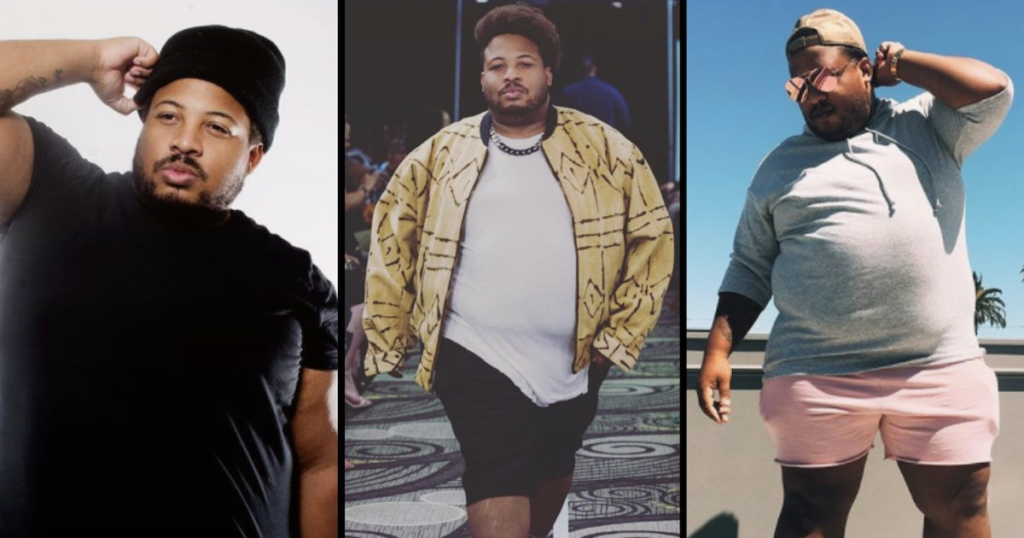In recent years, the fashion industry has taken significant strides towards inclusivity, embracing diversity in all its forms. While progress has been made in promoting body positivity and acceptance, the representation of plus-size men in luxury fashion has been a slow journey. However, with the increasing demand for body-inclusive fashion, luxury brands are now acknowledging the importance of catering to a broader audience. In this article, we explore the rise of inclusivity in the luxury fashion industry, particularly concerning plus-size men, and how this trend is transforming the landscape of fashion.
The Evolution of Luxury Fashion
Luxury fashion has long been associated with exclusivity and a narrow definition of beauty. Historically, plus-size individuals, including men, have been underrepresented in mainstream fashion campaigns and runway shows. The lack of representation often left many feeling marginalized and excluded from the world of high-end fashion.
However, as societal attitudes continue to evolve, there has been a growing demand for brands to embrace inclusivity and represent diverse body types. Recognizing this shift in consumer preferences, luxury fashion houses have started to make changes to their marketing strategies, product offerings, and messaging.

Embracing Body Positivity
One of the driving forces behind the rise of inclusivity in luxury fashion is the body positivity movement. Body positivity advocates for the acceptance and celebration of all body types, promoting self-love and confidence. This movement has gained momentum in recent years, thanks to the efforts of influencers, activists, and consumers who have called for greater representation in the fashion industry.
Luxury brands have recognized the potential for positive change and are now taking active steps to embrace body positivity in their campaigns and product lines. They are breaking away from the outdated norms and promoting diversity by featuring plus-size men in their advertisements and fashion shows.

The Power of Representation
Representation matters, and the inclusion of plus-size men in luxury fashion is more than just a trend; it’s a transformative movement. When individuals see themselves represented in marketing materials and media, they feel acknowledged and valued. This inclusivity not only fosters a sense of belonging but also encourages body confidence and self-esteem.
The positive impact of representation is evident in the way consumers respond to fashion brands. Those that prioritize inclusivity and diversity are gaining immense popularity, attracting a more extensive and loyal customer base.
Expanding Product Offerings
In the past, finding luxury fashion options for plus-size men was a challenging task. Many high-end brands offered limited sizes, leaving a significant portion of potential customers underserved. However, with the rise of inclusivity, luxury fashion labels are expanding their product offerings to accommodate a more diverse range of body types.
Now, plus-size men can find an array of stylish and trendy options that cater to their fashion preferences. From formal attire to casual wear, luxury fashion brands are embracing body-inclusive designs that exude elegance and style for everyone.

Breaking Stereotypes and Redefining Standards
The traditional standards of beauty perpetuated by the fashion industry have often been unrealistic and unattainable for many. By featuring plus-size men in their campaigns, luxury fashion brands are challenging these stereotypes and redefining the standards of beauty.
The images portrayed by luxury fashion brands are influential in shaping societal perceptions. By showcasing diverse body types and redefining beauty ideals, these brands are fostering a culture of acceptance and appreciation for individuality.
The Role of Influencers and Celebrities
In the age of social media, influencers and celebrities play a crucial role in shaping fashion trends and consumer behavior. Plus-size male influencers have emerged as powerful advocates for body inclusivity, inspiring others to embrace their bodies and dress confidently.
As luxury fashion brands collaborate with influential personalities, they are sending a powerful message of inclusivity and acceptance. This collaboration not only boosts the brands’ credibility but also strengthens the movement towards body positivity.

The Future of Inclusivity in Luxury Fashion
The rise of inclusivity in luxury fashion is not a passing fad; it is a paradigm shift that is here to stay. As more brands recognize the significance of catering to diverse audiences, the industry will continue to evolve positively.
The fashion landscape is becoming more welcoming and empowering for plus-size men, as luxury brands prioritize inclusivity, representation, and diversity. This transformation is creating a more inclusive and accepting space where everyone can feel confident and fashionable, irrespective of their body type.
The Impact on Society
The increasing inclusivity in luxury fashion goes beyond just the industry itself; it has a significant impact on society as well. When people see diverse body types represented in fashion campaigns and media, it challenges the prevailing beauty standards and fosters a more accepting and tolerant culture.
As luxury fashion brands lead the way in embracing inclusivity, other sectors of the fashion industry are also starting to follow suit. High-street retailers, independent designers, and even fast-fashion brands are recognizing the importance of catering to diverse audiences. This widespread acceptance of inclusivity is a step towards building a more inclusive and compassionate society.

The Role of Luxury Fashion in Shaping Culture
Luxury fashion has always played a pivotal role in shaping culture and influencing consumer behavior. By prioritizing inclusivity, luxury brands are not only making a statement about their values but also influencing the broader fashion landscape.
The power of luxury fashion as a trendsetter cannot be underestimated. When renowned luxury brands feature plus-size men in their campaigns, it sends a message to the entire fashion industry that inclusivity is not only desirable but necessary for staying relevant and connected to their audience.
Conclusion
The rise of inclusivity in luxury fashion, particularly concerning plus-size men, is a promising step towards a more diverse and accepting industry. Luxury brands are recognizing the power of representation, embracing body positivity, and breaking stereotypes to cater to a broader audience. This evolution is not only reshaping the fashion landscape but also fostering a culture of acceptance and celebration of individuality.






